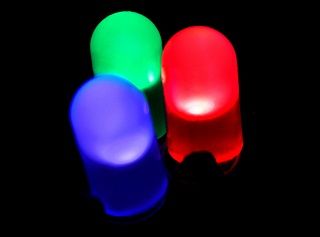From a Guest Blogger in the UK: The Environmental Benefits of LED Lights

Now, we are seeing another interesting paradigm shift in terms of lighting. LED (Light-Emitting Diode) fixtures are quickly revolutionizing how we light our homes, businesses and even our motorways. There are several benefits that these lights will offer, but perhaps the greatest advantage is their environmentally friendly nature. As these lights are unfamiliar to many, with numerous homeowners still opting for the less-effective energy saving light bulbs, this latest guest post examines why so many consumers are choosing to purchase LED units.
Longevity
One of the biggest differences between LED fixtures and traditional incandescent lights is the fact that LED bulbs can last up to fifty thousand hours. In simpler terms, this is approximately fifty times longer than a normal bulb and no less than twenty-five times longer than a halogen light. This is primarily due to the fact that much less heat is generated by a LED light. The end result is less waste pumped back into the environment while the consumer can enjoy excellent cost savings from a long-term perspective.
Chemical-Free Alternatives
One nasty feature of traditional lights is that the inside of the bulbs tend to contain mercury. When they are discarded, this heavy metal can seep into the groundwater supply. Not only is mercury highly toxic to nearly every animal on the planet, it poses a very real threat to our own health. Thankfully, LED lights contain no mercury whatsoever.
Less Power Consumption
LED lights will consume much less energy than other fixtures. In fact, the average amount of electricity needed is between two and seventeen watts. This reduces power consumption by up to a staggering eighty per cent. Note that this is even when compared to energy-efficient fluorescent bulbs. Additionally, lower amounts of limited fossil fuels will be burned and less harmful by-products will be thrown into the atmosphere. In fact, some studies have shown that by the year 2027, LED lights have the potential to save up to three hundred and forty-eight terawatt hours of energy use. This is roughly equivalent to the entire yearly output of no less than forty-four traditional power plants!
Cooling Costs
As mentioned previously, LED lights generate significantly less heat than high-output bulbs. Not only will this enable them to last much longer, but we should never forget that this heat is also transferred into our homes and businesses. LED lights such as those manufactured by the online supplier Inui will therefore lessen the amount of power needed to cool an environment. Once again, this equates to energy savings, less power needed and a lower carbon footprint of any location.
A Bright Future
Recent studies have suggested that switching to LED lighting solutions can reduce the harm to our environment by up to ten times. Still, we should not forget that this technology is continuing to advance. Some have pointed to the fact that by 2017, these very same bulbs will be up to seventy per cent more efficient than at the present. So, their environmental impact will be even further reduced.
Indeed, there appears to be no downside for consumers who choose LED bulbs over traditional lighting methods. In modern times that are defined by a great many environmental concerns, LED lighting is providing us with a clean, safe and efficient energy alternative. It will be interesting to see what the future holds.
